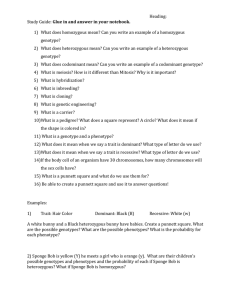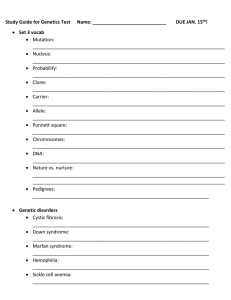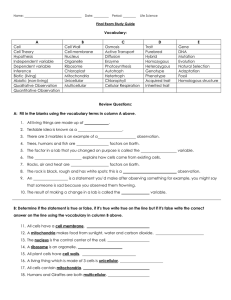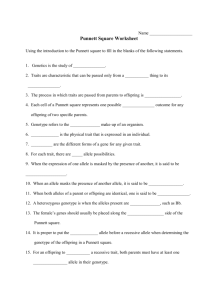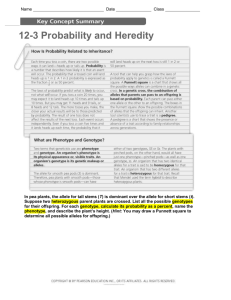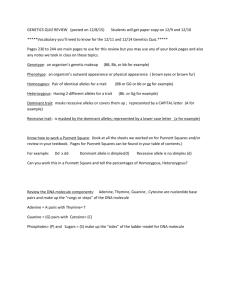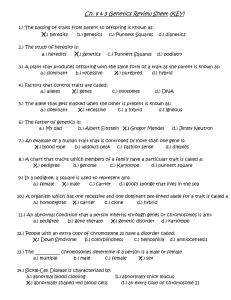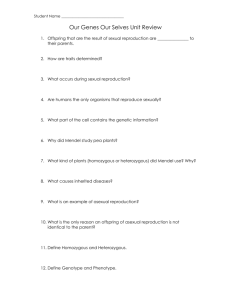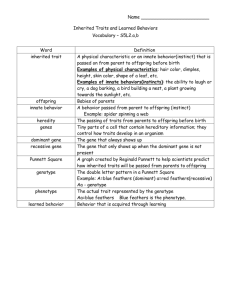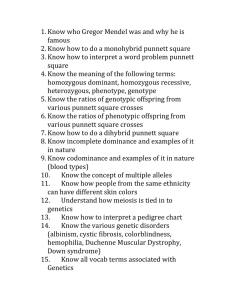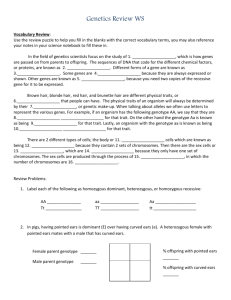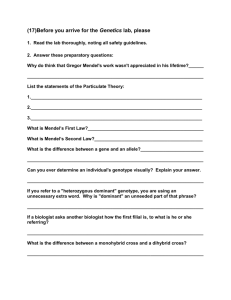Family Traits Survey - Little Flower School
advertisement
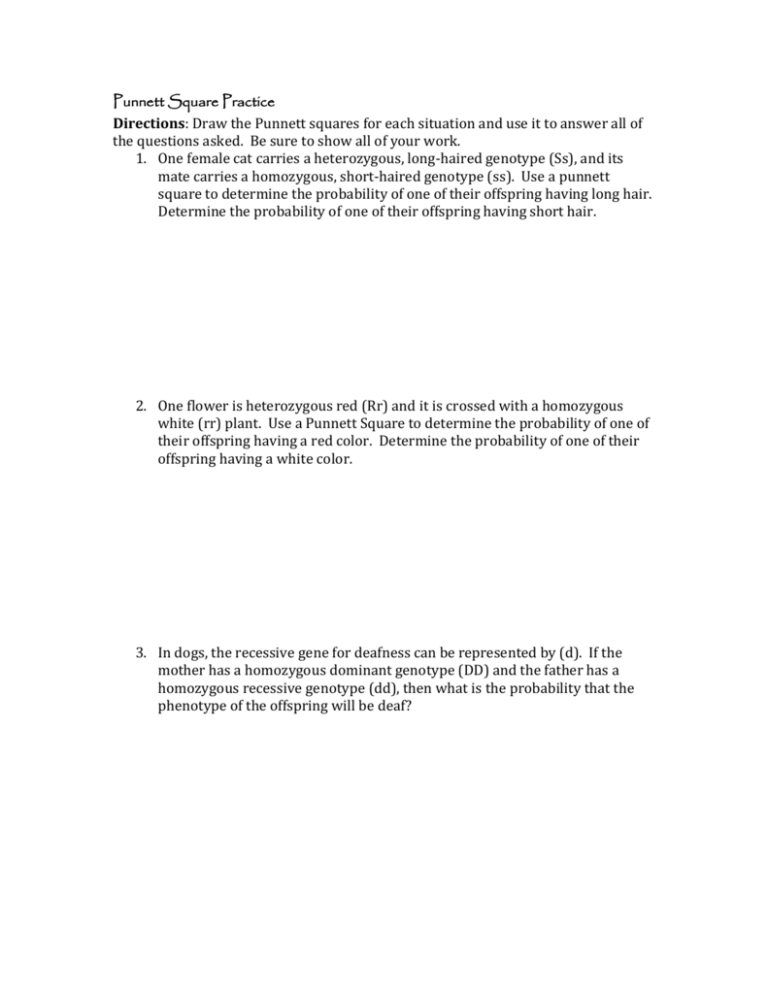
Punnett Square Practice Directions: Draw the Punnett squares for each situation and use it to answer all of the questions asked. Be sure to show all of your work. 1. One female cat carries a heterozygous, long-haired genotype (Ss), and its mate carries a homozygous, short-haired genotype (ss). Use a punnett square to determine the probability of one of their offspring having long hair. Determine the probability of one of their offspring having short hair. 2. One flower is heterozygous red (Rr) and it is crossed with a homozygous white (rr) plant. Use a Punnett Square to determine the probability of one of their offspring having a red color. Determine the probability of one of their offspring having a white color. 3. In dogs, the recessive gene for deafness can be represented by (d). If the mother has a homozygous dominant genotype (DD) and the father has a homozygous recessive genotype (dd), then what is the probability that the phenotype of the offspring will be deaf? Family Trait Survey Directions: Tonight, observe the traits that people in your family share. Record your observations in the table. Describe the trait in the first column, identify the family member’s name in the name boxes, and circle yes (Y) or no (N) for each trait. Then, answer the questions following the table. Trait Name: Name: Name: Name: Y/N Y/N Y/N Y/N Y/N Y/N Y/N Y/N Y/N Y/N Y/N Y/N Y/N Y/N Y/N Y/N Y/N Y/N Y/N Y/N Y/N Y/N Y/N Y/N Y/N Y/N Y/N Y/N Y/N Y/N Y/N Y/N Y/N Y/N Y/N Y/N Y/N Y/N Y/N Y/N 1. Are there any traits that only one family member has? If so, which ones? 2. How many traits do you share with each person? (List the family member and then the number of traits he or she shares with you)
